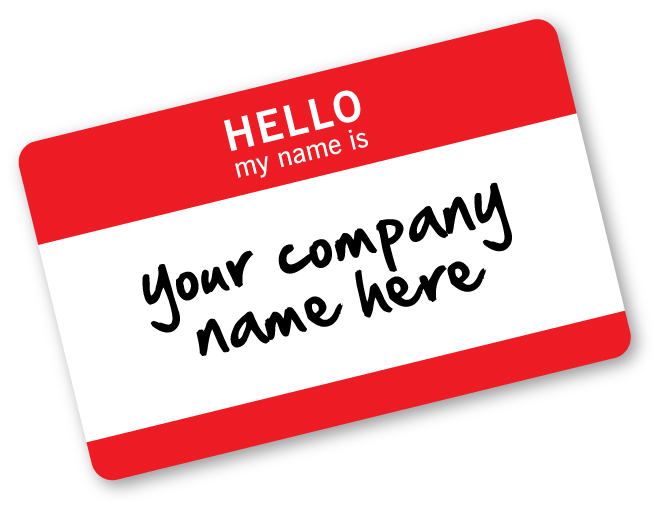 Last week I wrote about 7 Criteria for a Great Brand Name where I explained why choosing the right brand or product name is really important. Today’s article details the seven steps for how to go about actually choosing/creating a brand or product name.
Last week I wrote about 7 Criteria for a Great Brand Name where I explained why choosing the right brand or product name is really important. Today’s article details the seven steps for how to go about actually choosing/creating a brand or product name.
7 Steps for Choosing a Brand or Product Name
Step 1: Develop Your Strategy and Messaging
The first step is to develop your strategy and messaging. The direction, messaging, and positioning will help guide your naming. If the name doesn’t fit with one of those aspects, then toss it.
For your brand, you need to determine its value proposition and what makes it unique compared to others in the marketplace.
Step 2: Market Research
Before starting to brainstorm, you’ll want to do some background market research. Market research helps you identify potential problems with a name (such as it’s already trademarked) and gives you an understanding of your competition, audience and what types of names will be successful. Once you fully understand your market, you’ll be able to create an effective brand name.
One strategy is to identify gaps and opportunities in your field and develop a brand name that fills those gaps.
Step 3: Brainstorm
Now you should be ready to start brainstorming! Get everyone involved to maximize brain power and creativity. At this stage, every idea is open for possibility; try not to judge too soon. A seemly ridiculous thought could turn into just the right name.
When thinking of names, focus on the brand from all angles and think about all target audiences. If you can, get insight into your ideas from customers or third parties who understand your industry.
Step 4: Create a Short List
Once you’ve got your giant list of names, it’s time to narrow things down. Some you’ll know to reject right away, others will be “winners” and some you might not be sure about. If it helps, create 3 separate lists: yes, maybe, no, and slot each name in a category. From there, look at the maybe list and move each name into the yes or no list.
You should end up with about 8-12 names on your short list. These should be names that can stand the test of time and work through market changes, brand extensions, geographic expansions, trends, fads, and so on.
Step 5: Search Trademark Availability
Take each name on your short list and do a trademark search for that name (and variants). In Canada, search the Canadian Trade-marks Database to see if the names on your list have been trademarked. You’ll also want to make sure the name doesn’t violate any specific regulations for names in your industry.
In addition to verifying trademark availability, you should also do a quick online search for the name to see what comes up. As well, check if the domain name is available for each name. You can easily check using BlueHost or GoDaddy. (Domain name availability isn’t necessarily a deal breaker but it’s good to know whether or not it’s free).
Step 6: Refine Your List
Based on the results from step 5, your list will likely be a bit shorter. Carefully consider each name and create a new list with your top 3-5 names.
Step 7: Make Your Decision
Review the final list of names and make a decision. If time and budget allow, test the market with a few of the names. Create logos and packaging and see what resonates most with consumers.
Once your final decision is made, be sure to use the new name, logo, packaging, etc. consistently.
Types of Brand Names
Brand names typically fall into several different categories.
Acronyms and Initials – Names created from initials: IBM, M&M (for Forrest Mars and Bruce Murrie).
Amalgam – Names created by taking parts of words and putting them together: Nabisco (National Biscuit Company).
Alliteration and Rhyme – Fun to say, memorable: Nutter Butter, YouTube, Piggly Wiggly.
Descriptive – Describe the product or characteristic: Toys R Us, General Motors.
Evocative – Invoke a vivid image that alludes to a brand benefit: London Fog, Amazon.
Neologism – A new, made-up word: Kodak, Verizon.
Foreign Word – Use a foreign word or phrase as a brand name: Volvo for “I roll”.
Founders’ Names – Use the name of a founder of founder family member: Hewlett-Packard, Wendy’s.
Nickname – Use a founder’s nickname: Adidas (aka Adolf Dassler), Kinkos.
Ingredients – Based on ingredients: Clorox for chlorine plus sodium hydroxide, Pepsi for the digestive enzyme pepsin.
Geography – Chose a name associated with company/product location: eBay for East Bay, Fuji for the tallest mountain in Japan.
Humor/Slang – For a name with personality: Yahoo!, Cracker Jack.
Merged – When two companies merge into one, sometimes both names are kept: ExxonMobil, Cadbury Schweppes.
Mimetics – Use alternative spellings for common sounds: 2(x)ist, Krispy Kreme.
Personification – Create a character or adopt an existing personage: Green Giant, Midas Mufflers.
Onomatopoeia – Use a sound associated with a product function: Twitter, Meow Mix.
Clever Statement – Doesn’t have to be just a word or two: Seven for All Mankind, I Can’t Believe It’s Not Butter!.
What’s your favorite brand or product name? Why?
Read more: Nicknames Vs. Real Names


